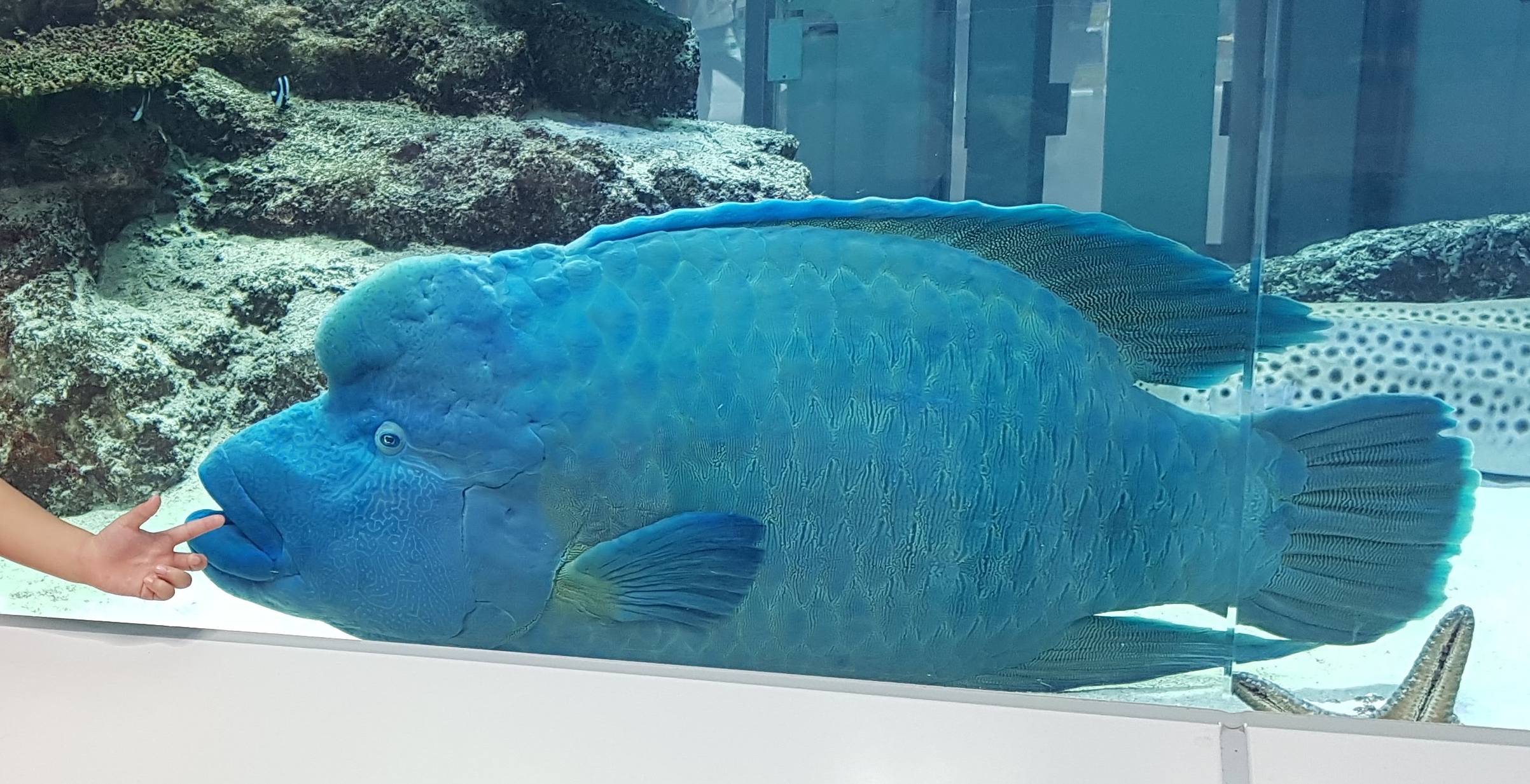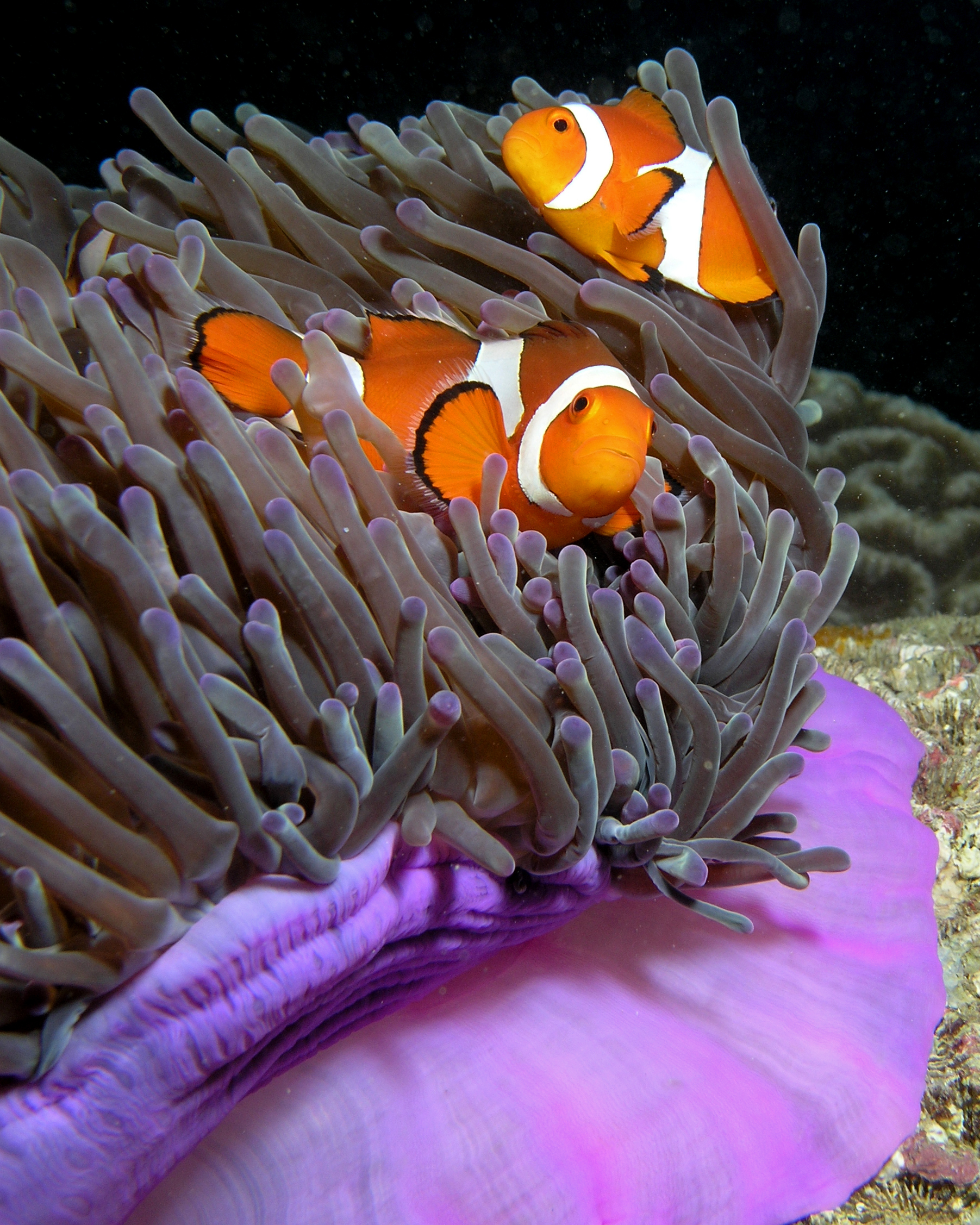|
Wrasse
The wrasses are a family, Labridae, of marine fish, many of which are brightly colored. The family is large and diverse, with over 600 species in 81 genera, which are divided into 9 subgroups or tribes. They are typically small, most of them less than long, although the largest, the humphead wrasse, can measure up to . They are efficient carnivores, feeding on a wide range of small invertebrates. Many smaller wrasses follow the feeding trails of larger fish, picking up invertebrates disturbed by their passing. Juveniles of some representatives of the genera '' Bodianus'', '' Epibulus'', '' Cirrhilabrus'', '' Oxycheilinus'', and '' Paracheilinus'' hide among the tentacles of the free-living mushroom corals & '' Heliofungia actiniformis''. The word "wrasse" comes from the Cornish word ''wragh'', a lenited form of ''gwragh'', meaning an old woman or hag, via Cornish dialect ''wrath''. It is related to the Welsh ''gwrach'' and Breton ''gwrac'h''. Distribution Most wrasses ... [...More Info...] [...Related Items...] OR: [Wikipedia] [Google] [Baidu] |
Humphead Wrasse
The humphead wrasse (''Cheilinus undulatus'') is a large species of wrasse mainly found on coral reefs in the Indo-Pacific region. It is also known as the Māori wrasse, Napoleon wrasse, Napoleon fish, Napoleonfish, ''so mei'' 蘇眉 (Cantonese), ''mameng'' (Filipino), and ''merer'' in the Pohnpeian language of the Caroline Islands. Description The humphead wrasse is the largest living member of the family Labridae. Males, typically larger than females, are capable of reaching up to 2 meters and weighing up to 180 kg, but the average length is a little less than 1 meter. Females rarely grow larger than one meter. This species can be easily identified by its large size, thick lips, two black lines behind its eyes, and the hump on the foreheads of larger adults. Its color can vary between dull blue-green to more vibrant shades of green and purplish-blue. Adults are usually observed living singly, but are also seen in male/female pairs and in small groups. Habitat The hum ... [...More Info...] [...Related Items...] OR: [Wikipedia] [Google] [Baidu] |
Ballan Wrasse
The ballan wrasse (''Labrus bergylta'') is a species of marine ray finned fish from the family Labridae, the wrasses. It is found in the eastern Atlantic Ocean, where it inhabits rocky areas. Like many wrasse species, it is a protogynous hermaphrodite—all fish start life as females, and some dominant fish later become males. It is used as a food fish in some areas and it is also finding use as a cleaner fish in the aquaculture of Atlantic salmon (''Salmo salar'') in northwestern Europe. Description The ballan wrasse is a large, heavy bodied wrasse with a relatively deep body and large head. It has a smallish mouth which is surrounded by thick, fleshy, rather wrinkled lips, and the jaws are armed with a single row of robust teeth which are sharp and pointed in young fish but blunter and more worn in older fish. It has a long dorsal fin which has 18–21 spines in its anterior portion and 9–13 branched rays in the rear part. The anal fin is markedly shorter and has three spines ... [...More Info...] [...Related Items...] OR: [Wikipedia] [Google] [Baidu] |
Cirrhilabrus
''Cirrhilabrus'' is a genus of fish in the family Labridae native to reefs in the Indian and Pacific Ocean, commonly kept in aquaria. Species There are currently 60 recognized species in this genus: * '' Cirrhilabrus adornatus'' J. E. Randall & Kunzmann, 1998 (Red-fin fairy-wrasse) * '' Cirrhilabrus africanus'' Victor, 2016 (African long-fin fairy-wrasse)Victor, B.C. (2016)Two new species in the spike-fin fairy-wrasse species complex (Teleostei: Labridae: ''Cirrhilabrus'') from the Indian Ocean.''Journal of the Ocean Science Foundation, 23: 21–50.'' * '' Cirrhilabrus aurantidorsalis'' G. R. Allen & Kuiter, 1999 (Orangeback fairy-wrasse) * '' Cirrhilabrus balteatus'' J. E. Randall, 1988 (Girdled fairy-wrasse) * '' Cirrhilabrus bathyphilus'' J. E. Randall & Nagareda, 2002 (Deep-water fairy-wrasse) * '' Cirrhilabrus beauperryi'' G. R. Allen, Drew & Barber, 2008 (Beau's fairy-wrasse) * '' Cirrhilabrus blatteus'' V. G. Springer & J. E. Randall, 1974 (Purple-boned fairy ... [...More Info...] [...Related Items...] OR: [Wikipedia] [Google] [Baidu] |
Sex Change In Animals
Sequential hermaphroditism (called dichogamy in botany) is a type of hermaphroditism that occurs in many fish, gastropods, and plants. Sequential hermaphroditism occurs when the individual changes its sex at some point in its life. In particular, a sequential hermaphrodite produces eggs (female gametes) and sperm (male gametes) at different stages in life. Species that can undergo these changes from one sex to another do so as a normal event within their reproductive cycle that is usually cued by either social structure or the achievement of a certain age or size. In animals, the different types of change are male to female (protandry or protandrous hermaphroditism), female to male (protogyny or protogynous hermaphroditism), bidirectional (serial or bidirectional hermaphroditism). Both protogynous and protandrous hermaphroditism allow the organism to switch between functional male and functional female. Bidirectional hermaphrodites have the capacity for sex change in either direc ... [...More Info...] [...Related Items...] OR: [Wikipedia] [Google] [Baidu] |
Fish Jaw
Most bony fishes have two sets of jaws made mainly of bone. The primary oral jaws open and close the mouth, and a second set of pharyngeal jaws are positioned at the back of the throat. The oral jaws are used to capture and manipulate prey by biting and crushing. The pharyngeal jaws, so-called because they are positioned within the pharynx, are used to further process the food and move it from the mouth to the stomach. Cartilaginous fishes, such as sharks and rays, have one set of oral jaws made mainly of cartilage. They do not have pharyngeal jaws. Generally jaws are articulated and oppose vertically, comprising an upper jaw and a lower jaw and can bear numerous ordered teeth. Cartilaginous fishes grow multiple sets ''(polyphyodont)'' and replace teeth as they wear by moving new teeth laterally from the medial jaw surface in a conveyor-belt fashion. Teeth are replaced multiple times also in most bony fishes, but unlike cartilaginous fishes, the new tooth erupts only af ... [...More Info...] [...Related Items...] OR: [Wikipedia] [Google] [Baidu] |
Moon Wrasse
The moon wrasse (''Thalassoma lunare'') also known as the crescent wrasse or lyretail wrasse, is a species of wrasse native to the Indian Ocean and the western Pacific Ocean. It is an inhabitant of coral reefs and surrounding areas at depths from . Moon wrasses are carnivorous and tend to prey on fish eggs and small sea-floor dwelling invertebrates. This species can reach in total length. It is of minor importance to local commercial fisheries and can also be found in the aquarium trade. The juvenile is blue on the lower half of its body, with a black spot in the middle of the dorsal fin and a black blotch on the caudal fin base. As it matures, the spot turns into a yellow crescent, hence the name. The body is green, with prominently marked scales. Coloration of the head ranges from blue to magenta, with a broken checkerboard pattern. Moon wrasses are active fish, said to be moving all day long. They are also territorial, nipping, chasing, and otherwise harassing fish ... [...More Info...] [...Related Items...] OR: [Wikipedia] [Google] [Baidu] |
Paracheilinus
''Paracheilinus'' is a genus of flasher wrasses, native to the Indian Ocean and the western Pacific Ocean. Species There are currently 20 recognized species in this genus: * '' Paracheilinus alfiani'' G. R. Allen, Erdmann & Yusmalinda, 2016 * '' Paracheilinus angulatus'' J. E. Randall & Lubbock, 1981 (Angular flasherwrasse) * '' Paracheilinus attenuatus'' J. E. Randall, 1999 * '' Paracheilinus bellae'' J. E. Randall, 1988 (Bell's flasherwrasse) * ''Paracheilinus carpenteri'' J. E. Randall & Lubbock, 1981 (Pink flasherwrasse) * '' Paracheilinus cyaneus'' Kuiter & G. R. Allen, 1999 (Blue flasherwrasse) * '' Paracheilinus filamentosus'' G. R. Allen, 1974 (Filamentous flasherwrasse) * '' Paracheilinus flavianalis'' Kuiter & G. R. Allen, 1999 (Yellow-fin flasherwrasse) * '' Paracheilinus hemitaeniatus'' J. E. Randall & Harmelin-Vivien, 1977 * '' Paracheilinus lineopunctatus'' J. E. Randall & Lubbock, 1981 (Spot-lined flasherwrasse) * '' Paracheilinus mccoskeri'' J. E. ... [...More Info...] [...Related Items...] OR: [Wikipedia] [Google] [Baidu] |
Fish
Fish are aquatic, craniate, gill-bearing animals that lack limbs with digits. Included in this definition are the living hagfish, lampreys, and cartilaginous and bony fish as well as various extinct related groups. Approximately 95% of living fish species are ray-finned fish, belonging to the class Actinopterygii, with around 99% of those being teleosts. The earliest organisms that can be classified as fish were soft-bodied chordates that first appeared during the Cambrian period. Although they lacked a true spine, they possessed notochords which allowed them to be more agile than their invertebrate counterparts. Fish would continue to evolve through the Paleozoic era, diversifying into a wide variety of forms. Many fish of the Paleozoic developed external armor that protected them from predators. The first fish with jaws appeared in the Silurian period, after which many (such as sharks) became formidable marine predators rather than just the prey of arthrop ... [...More Info...] [...Related Items...] OR: [Wikipedia] [Google] [Baidu] |
Pacific Ocean
The Pacific Ocean is the largest and deepest of Earth's five oceanic divisions. It extends from the Arctic Ocean in the north to the Southern Ocean (or, depending on definition, to Antarctica) in the south, and is bounded by the continents of Asia and Oceania in the west and the Americas in the east. At in area (as defined with a southern Antarctic border), this largest division of the World Ocean—and, in turn, the hydrosphere—covers about 46% of Earth's water surface and about 32% of its total surface area, larger than Earth's entire land area combined .Pacific Ocean . '' Britannica Concise.'' 2008: Encyclopædia Britannica, Inc. The centers of both the [...More Info...] [...Related Items...] OR: [Wikipedia] [Google] [Baidu] |
Coral Reef
A coral reef is an underwater ecosystem characterized by reef-building corals. Reefs are formed of colonies of coral polyps held together by calcium carbonate. Most coral reefs are built from stony corals, whose polyps cluster in groups. Coral belongs to the class Anthozoa in the animal phylum Cnidaria, which includes sea anemones and jellyfish. Unlike sea anemones, corals secrete hard carbonate exoskeletons that support and protect the coral. Most reefs grow best in warm, shallow, clear, sunny and agitated water. Coral reefs first appeared 485 million years ago, at the dawn of the Early Ordovician, displacing the microbial and sponge reefs of the Cambrian. Sometimes called ''rainforests of the sea'', shallow coral reefs form some of Earth's most diverse ecosystems. They occupy less than 0.1% of the world's ocean area, about half the area of France, yet they provide a home for at least 25% of all marine species, including fish, mollusks, worms, crustaceans, echinode ... [...More Info...] [...Related Items...] OR: [Wikipedia] [Google] [Baidu] |
Dorsal Fin
A dorsal fin is a fin located on the back of most marine and freshwater vertebrates within various taxa of the animal kingdom. Many species of animals possessing dorsal fins are not particularly closely related to each other, though through convergent evolution they have independently evolved external superficial fish-like body plans adapted to their marine environments, including most numerously fish, but also mammals such as cetaceans ( whales, dolphins, and porpoises), and even extinct ancient marine reptiles such as various known species of ichthyosaurs. Most species have only one dorsal fin, but some have two or three. Wildlife biologists often use the distinctive nicks and wear patterns which develop on the dorsal fins of large cetaceans to identify individuals in the field. The bony or cartilaginous bones that support the base of the dorsal fin in fish are called ''pterygiophores''. Functions The main purpose of the dorsal fin is to stabilize the animal against r ... [...More Info...] [...Related Items...] OR: [Wikipedia] [Google] [Baidu] |





.jpg)
